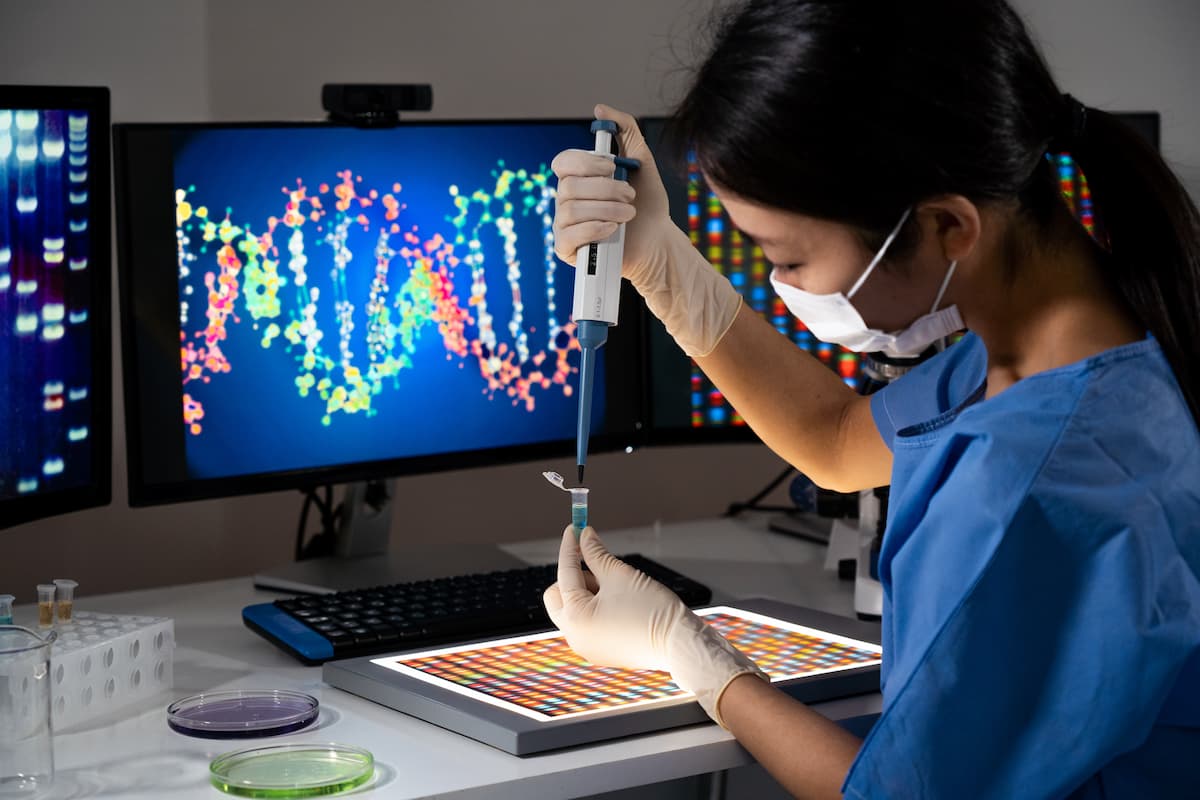- Center on Health Equity & Access
- Clinical
- Health Care Cost
- Health Care Delivery
- Insurance
- Policy
- Technology
- Value-Based Care
Standardized Measurements Needed for AAVs in Gene Therapy, Study Finds
Common measurements for modified adeno-associated viruses (AAVs), a gene therapy delivery method, showed substantial variation in accuracy and precision.
More effort is needed to improve and standardize the measurement of recombinant adeno-associated virus (AAV) in viral vector–based gene therapies, according to a recent study published in Human Gene Therapy.1 The findings revealed significant variation in values between laboratories across measurement methods, but especially with polymerase chain reaction-enzyme linked immunosorbent assay (PCR-ELISA).
“A variety of techniques to characterize the composition of an AAV preparation and its distribution of genetic cargo are employed, but many are yet to be harmonized or standardized within the community, complicating data assessment by developers and regulators across different laboratories and organizations,” the authors explained.
The findings highlight a need for improved standardization of measurements for adeno-associated virus in the context of viral vector–based gene therapies. | Image credit: RFBSIP - stock.adobe.com

AAV is a key delivery tool for gene therapy due to its minimal pathogenicity and because it fosters long-term gene expression in different tissues.2 Recombinant AAV is being used increasingly widely in therapies, although concerns remain around the safe use of high-dose viral therapies in humans.
FDA guidance states that defective interfering particles, noninfectious particles, empty capsid particles, and replicating recombinant virus contaminants are all concerning impurities in viral vectors, and that these should be identified and reported as ratios such as full to empty particles or viral particles to infectious units.1 The current study explored methods of measuring the ratio of full capsids with complete viral genomes to the total viral capsid number, or the full-to-total (FTT) ratio.
“Rapid expansion of AAV therapies highlights the importance of understanding the quantitative capabilities of physicochemical characterization,” the authors wrote. “This is especially critical for the distribution of empty and full, as well as other particles (e.g., partially filled, or overfilled), as well as their individual particle counts.”
Researchers of the study—a collaboration between the National Institute of Standards and Technology, the National Institute for Innovation in Manufacturing Biopharmaceuticals, and the US Pharmacopeia—aimed to assess variability across methods of quantifying AAV vectors.
Six industry laboratories in the US and Europe took part in the study, which compared values obtained via the different analytical techniques at the 6 laboratories. The participating laboratories measured the FTT ratios of AAV5 and AAV8 serotypes, and the methods used were: PCR-ELISA, sedimentation velocity analytical ultracentrifugation (SV-AUC), size exclusion chromatography with multi-angle light scattering (SEC–MALS), cryogenic electron microscopy, and dual-wavelength ultraviolet (UV) spectrophotometry.
The study showed a SD of less than 10% between laboratories with the optical techniques SEC–MALS and UV spectroscopy. The authors noted that this is likely due to uniform protocols, and that these methods seem to have high utility in measuring FTT.
AUC also showed good repeatability, but approximately 25% SD between laboratories. “AUC is considered a gold standard technique for AAV characterization, with good internal consistency (repeatability) in reported FTT values,” the authors explained. “The variation (reproducibility) in AUC measurements between laboratories could be minimized with a harmonized methodology.”
PCR-ELISA, likely the most common method of measuring FTT, was the least reliable in the study. PCR and ELISA both showed higher variability then other techniques and poor reproducibility within and between laboratories.
“The PCR-ELISA technique is commonly used, but significant variation in reported values between laboratories shows that this is a problematic measurement method as done here (allowing individual laboratories to apply their own analysis procedure),” the authors wrote. “This is not to say that PCR-ELISA could not (or should not) be used for FTT measurement of AAV.”
Overall, the findings highlight a need for improved standardization of measurements for AAV in the context of viral vector–based gene therapies, the authors concluded. The study acknowledged the capabilities and shortcomings of currently used methods of measurement, noting that even AUC, a relatively accurate technique, has opportunities for improvement and standardization.
“The promise of AAV-based therapies can be better realized with harmonized characterization methods,” the authors concluded. “This represents an initial effort in that direction.”
References
1. Lehman SE, Vreeland WN, Blaszczyk AJ, et al. Interlaboratory measurement of adeno-associated virus: comparativeqQuantification of full and empty capsids. Hum Gene Ther. Published online December 26, 2024. doi:10.1089/hum.2024.124
2. Wang JH, Gessler DJ, Zhan W, Gallagher TL, Gao G. Adeno-associated virus as a delivery vector for gene therapy of human diseases. Signal Transduct Target Ther. Published online April 3, 2024. doi:10.1038/s41392-024-01780-w
